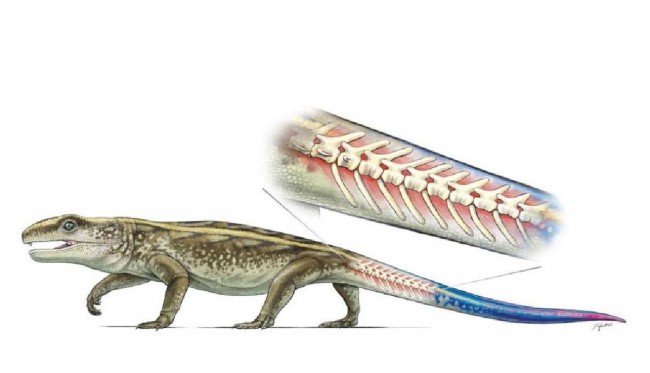
This ancient reptile could separate its tail to evade its predators
A new study has revealed that there was a prehistoric reptile living on Earth that could separate its tail to escape the predators. According to the new study, the reptile is an ancient lizard called captorhinus that lived more than 250 million years ago. The scientists of the latest analyzed the fossils of the lizard and discovered that this ancient group of lizard could detach their tails and escape from the predators around 289 million years ago. This is the oldest evidence of a reptile losing its tail to flee predators to date.
As per the study, the prehistoric lizard roamed the planet during the Early Permian era and was almost 2 kilograms (4.4 pounds) in weight. They were pretty small in size hence were more prone to being eaten up by predators like big carnivorous amphibians and mammals. When the predators attacked the lizard, it simply detached its tail to deceive than and then they run away. Losing the tail did not harm the ancient lizard as it protected all its vital organs inside the body. The scientists say that in some species, the tail grows again over time, normally within weeks. This process of re-growth of the tail is called caudal autotomy.
The latest study of the ancient lizard fossils was carried out by Robert Reisz, from the University of Toronto Mississauga, and his colleagues. They studied more than 70 ancient reptile tail vertebrae. From the study, they found out that that the tail bones of those ancient reptiles had cracks and these cracks were developed naturally. These cracks helped the ancient lizard to detach its tail during a predator attack. The scientists discovered that the cracks were more noticeable in juvenile reptiles which were the main targets of predators. Reisz said, “If a predator grabbed hold of one of these reptiles, the vertebra would break at the crack and the tail would drop off, allowing the captorhinid to escape relatively unharmed.”
The scientists compared the bone structure of the reptile’s tail to paper towels which could be easily pulled apart across its perforated lines. So, the latest study showed that just like modern lizards, the ancient lizards were also capable of detaching their tails during their juvenile period. The researchers of the study wrote, “As in modern iguanid lizards, smaller captorhinids were able to drop their tails as juveniles, presumably as a mechanism to evade a predator.”


